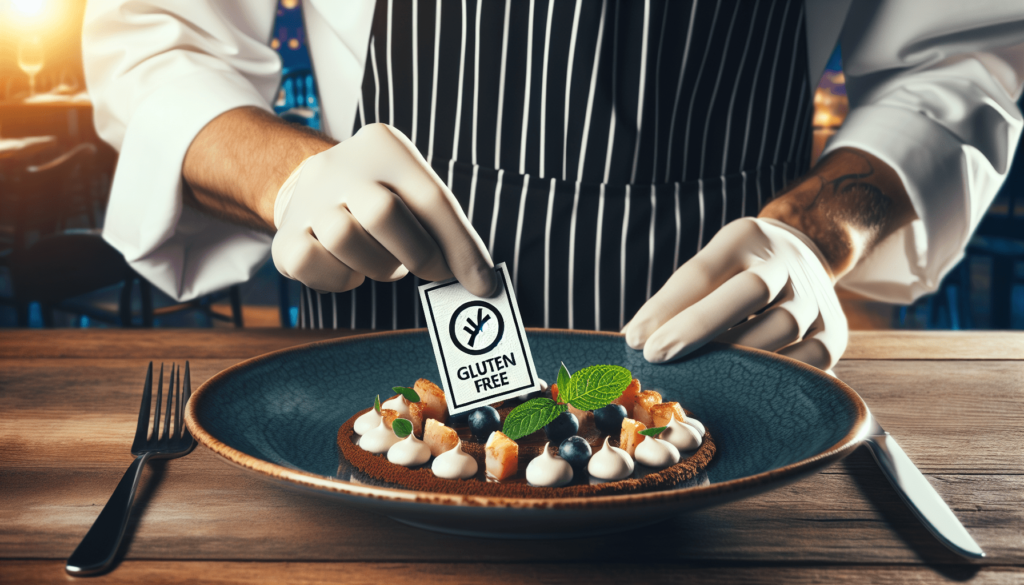Dining out with food allergies can be a daunting experience, but with the right strategies, you can enjoy a delicious meal without the stress. In “Best Practices for Dining Out with Food Allergies,” you’ll find practical tips and thoughtful advice to ensure your dining experiences are both safe and enjoyable. From researching restaurants ahead of time to effectively communicating your needs to the staff, this guide covers everything you need to navigate your food allergies with confidence and ease. Take control of your dining adventures and savor the moments without worry! Have you ever wondered, “How can I safely dine out with my food allergies?” Worrying about cross-contamination or accidentally consuming an allergen can turn what should be an enjoyable experience into a stressful one. But with some careful planning and communication, you can still savor the joy of eating out. This guide will walk you through the best practices for dining out with food allergies, ensuring your dining experience is as safe and enjoyable as possible.

Understanding Food Allergies
What Are Food Allergies?
Food allergies occur when your immune system reacts to a specific food protein as if it were harmful. This can result in a range of symptoms, from mild irritation to severe, life-threatening reactions known as anaphylaxis. The most common allergens include peanuts, tree nuts, milk, eggs, wheat, soy, fish, and shellfish.
How Can Food Allergies Affect Dining Out?
Eating out poses unique challenges for individuals with food allergies. Cross-contamination and hidden ingredients can make it difficult to ensure your meal is allergen-free. Understanding these risks and knowing how to navigate them can significantly reduce anxiety and improve your dining experience.
Planning Ahead
Researching Restaurants
Before dining out, it’s crucial to research your restaurant options. Look for places that are known for their allergy-friendly practices or have a specific allergen menu.
Reviewing Menus and Ingredients
Most restaurants have their menus available online, allowing you to preview your options and identify potential allergens. Some establishments even provide detailed allergen guides or ingredient lists.
Seeking Recommendations
Word-of-mouth recommendations from friends or online communities (such as food allergy support groups) can be invaluable. They can provide insights into how well a restaurant handles food allergies and whether the staff is knowledgeable and accommodating.
Communication Is Key
Informing the Restaurant in Advance
If possible, call the restaurant ahead of time to inform them of your allergies. This allows them to prepare and ensures they have safe options available for you.
Speaking to the Staff
When you arrive, reiterate your allergies to the server or manager. Be clear and specific about what you need to avoid and ask questions about preparation methods to minimize the risk of cross-contamination.
Using Allergy Cards
Consider creating allergy cards that list your allergens and any cross-contamination concerns. These can be handed to your server or chef, ensuring everyone is aware of your needs.
Sample Allergy Card
| Front of the Card | Back of the Card |
|---|---|
| I have a severe food allergy to: | Thank you for your attention! |
| – [List allergens] | Please ensure that: |
| – [List allergens] | – My meal does not come into contact with these allergens. |
| – [List allergens] | – Utensils and cooking surfaces are thoroughly cleaned. |
Menu Navigation
Understanding Menu Descriptions
Learn to recognize potential allergens hidden in menu descriptions. Terms like “aioli,” “marinade,” or “stock” can indicate the presence of allergens. Don’t hesitate to ask for clarification.
Customizing Your Order
Ordering simple dishes or customizing your meal can help minimize the risk of allergen exposure. For example, ask for sauces on the side or skip garnishes that might contain allergens.
Allergens Hidden in Common Foods
Certain foods are more likely to contain hidden allergens. Be cautious with baked goods, sauces, and fried items, as these can harbor unexpected allergens.

Cross-Contamination Risks
Understanding Cross-Contamination
Cross-contamination occurs when allergens are inadvertently transferred from one food to another, usually through shared equipment or surfaces. This can make otherwise safe foods dangerous for those with allergies.
Asking About Kitchen Practices
Inquire about the restaurant’s kitchen practices. Do they use separate utensils and cutting boards for allergen-free meals? Are frying oils shared between different foods?
Safe Food Handling Practices
Restaurants that are diligent about food safety will have protocols in place to prevent cross-contamination. Knowing these practices can give you peace of mind.
Emergency Preparedness
Carrying Emergency Medication
Always bring your prescribed emergency medication, such as an EpiPen, when dining out. It’s better to be over-prepared in case of an unexpected allergen exposure.
Knowing the Symptoms to Watch Out For
Be aware of the symptoms of an allergic reaction, which can include hives, swelling, difficulty breathing, and anaphylaxis. Recognizing these signs early can be life-saving.
Communicating Your Action Plan
Ensure that at least one other person you’re dining with is aware of your allergies and knows how to administer your emergency medication if needed. Inform the restaurant staff as well, so they’re prepared to act quickly in case of an emergency.
Legal Rights and Advocacy
Understanding Your Rights
Familiarize yourself with your legal rights when it comes to dining out with food allergies. In many countries, restaurants are required to accommodate food allergies and provide accurate information about allergens.
Advocating for Yourself and Others
Being proactive not only helps you but also paves the way for others with food allergies. Providing feedback to restaurants—both positive and constructive—encourages better food allergy practices industry-wide.
Joining Support Networks
Connecting with food allergy support groups can be empowering. These communities offer advice, share experiences, and can even provide recommendations for allergy-friendly dining spots.
International Travel and Food Allergies
Planning Ahead for Travel
Traveling abroad can add another layer of complexity to managing food allergies. Research destinations, local cuisine, and medical facilities before you go.
Communicating in a Foreign Language
Language barriers can make it harder to convey your dietary restrictions. Use translation apps or carry allergy cards in the local language to ensure you’re understood.
Sample Multilingual Allergy Card
| English | Spanish |
|---|---|
| I have a severe food allergy to: | Tengo una alergia alimentaria grave a: |
| – [List allergens] | – [List allergens] |
| Please ensure that my meal does not come into contact with these allergens. | Por favor, asegúrese de que mi comida no entre en contacto con estos alérgenos. |
Finding Allergy-Friendly Restaurants Abroad
Look for international restaurant chains known for their allergy-friendly menus. Online travel forums and food allergy groups can also provide helpful recommendations.
Tips for Dining Out with Children
Preparing Your Child
If your child has food allergies, teach them to communicate their needs clearly. Role-playing different scenarios can help build their confidence.
Choosing Child-Friendly, Allergy-Friendly Restaurants
Select restaurants with kid-friendly menus and staff who are particularly accommodating to young diners with allergies.
Bringing Safe Snacks
Sometimes it’s easier to bring along safe snacks, especially if you’re unsure about the allergen policies of a restaurant. This can also help keep your child comfortable and satisfied.
Handling Social Situations
Dining with Friends and Family
Openly communicate your food allergies with your dining companions. They are likely to be supportive and can help advocate for you when ordering.
Navigating Social Gatherings
Social events can be tricky, especially when food is served buffet-style or prepared by someone unfamiliar with your allergies. In such cases, eat beforehand or bring your own safe dish to share.
Conclusion
Dining out with food allergies may come with added challenges, but it doesn’t have to be a daunting task. By planning ahead, communicating effectively, and being prepared for emergencies, you can enjoy a safe and delightful dining experience. Remember, your health and safety come first, so never hesitate to advocate for your needs. With these best practices in mind, you can confidently navigate the culinary world and relish the joy of eating out, no matter where you are.
